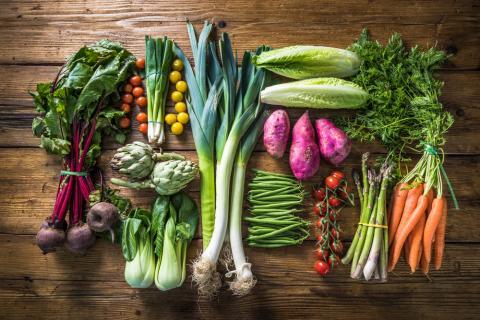
Remember your ma yelling in your ear to eat your veggies? Well, she was right. In all cuisines and all parts of the world, vegetables are part of a healthy diet for they offer so much, for such little calories. Low in fat and calories with no cholesterol, veggies are important sources of many nutrients, including potassium, dietary fiber, folate (folic acid), vitamin A, and vitamin C. The only issue is that vegetables can lose vitamins, minerals, colors, and flavors if not cooked properly.
While salads are a great way to get in those veggies, eating raw all the time is not possible (though there is always juicing!). Here are some fast and healthy ways to cook vegetables that preserve all the nutrients and give you great tasting veggies on your plate—in the healthiest way possible.
1. Steaming
Steaming is fast, preserves nutrients, and works best for fresh and frozen vegetables such as carrots, broccoli, spinach, root veggies (like beets and parsnips), peas, and beans.
If you don’t have a steaming basket, you can fill a pot with mixed vegetables and add about 1-1/2 inches of unsalted water and cover. Simmer until the vegetables are tender. Check often to make sure that the water doesn’t evaporate. If it gets too low, just add a little more water. Don’t forget to keep the remaining broth for soup or simply drink up the warm, flavorful broth. When you boil vegetables, it makes the water-soluble vitamins B & C leach into the water. So in case you prefer to boil the veggies and not steam them, you better drink up the water too!
The best veggies to steam: broccoli, cauliflower, carrots, asparagus, artichokes, zucchini, green beans, bok choy, and spinach.
2. Roasting
Roasting is quick, simple and an excellent way for cooking vegetables as it preserves the vitamins, flavors, and minerals.
In a large bowl, dribble your choice of sliced vegetables with olive oil. Add garlic powder, onion powder, salt, and pepper and give it all a good hand rub to evenly coat. Place the veggies on a cookie sheet and roast them at 350 degrees Fahrenheit until tender.
The best veggies to roast: root vegetables like potatoes, parsnips, sweet potatoes, and carrots taste wonderful when roasted but so do crucifers like broccoli and Brussels sprouts and other veggies like zucchini, onions, bell peppers, cabbage, and even tomatoes!
3. Stir-Frying
Stir-frying is another very good flavor- and color-preserving cooking method.
Sliced vegetables are put in a frying pan covered at the bottom with any liquid for cooking, such as chicken broth or a broth made from stir-fry seasonings. Constantly stir the vegetables until they are crispy and glossy.
Some veggies that can turn out stupendous stir-fried are sweet peppers, zucchini, carrots, broccoli, yellow or white onions, green onions, pea pods, cabbage, spinach, asparagus, mushrooms, and leafy Asian greens, as well as canned bamboo shoots, water chestnuts, and baby corn.
4. Sautéing
Vegetables can also be cooked by the steam produced by their own vegetable juices—aka sautéing.
In a frying pan, add a little olive oil, sliced vegetables, and your favorite seasonings. Cover the pan, put it on medium heat, and within 5-8 minutes you’ll have spicy and crispy vegetables. Stir often.
Sautéing works best for carrots, beans, squash, and shredded cabbage.
5. Microwaving
With microwaving you use little to no water and it basically cooks up the vegetable within, thus preserving nutrients in veggies like zucchini, carrots, and beans. However, cabbage is not a very good microwave candidate as its nutrients get broken down rather quick.
Just drizzle evenly cut veggies with a little healthy oil like coconut or olive, add seasonings, and toss to coat. Cook on medium to high for 7 to 10 minutes or till the veggies are cooked and crisp.
Remember that cooking veggies whole preserves nutrients the best. However, it’s not always practical to cook that way, so when you have to dice, be sure to cut them into large and uniform pieces so that the veggies cook evenly. And finally, even when pressed for time but needing your veggie fix, default to steaming and microwaving with a splash of water and olive oil and light seasonings. Your body will thank you!








